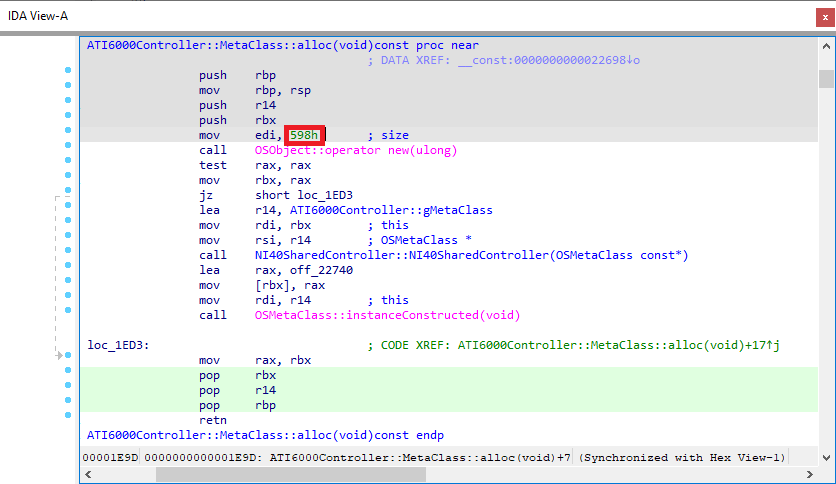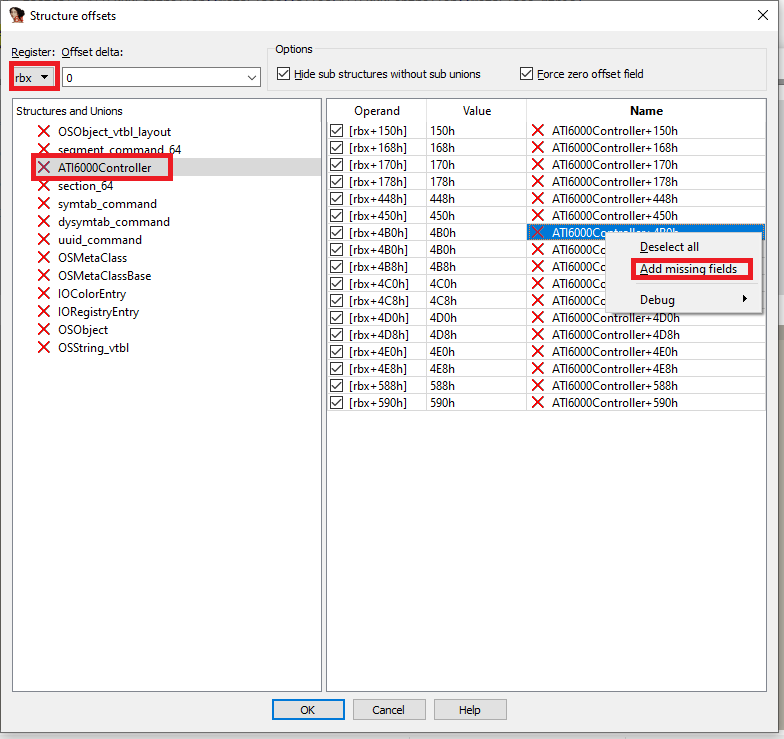Sometimes you know the structure size but not the actual layout yet. For example, when the size of memory being allocated for the structure is fixed:
In such cases, you can quickly make a dummy structure and then modify it as you analyze code which works with it. There are several approaches which can be used here.
Fixed-size structure 1: single array
This is the fastest option but makes struct modification a little awkward.
- create the struct (go to Structures view, press Ins and specify a name);
- create the array (position cursor at the start of the struct, press * and enter the size (decimal or hex)
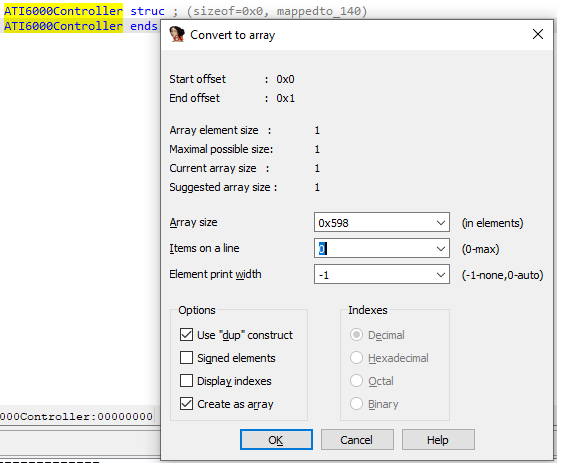
![]()
When you need to create a field in the middle, press * to resize the array so it ends before the field, create the field, then create another array after it to pad the struct to the full size again.
Fixed-size structure 2: big gap in the middle
- create the struct (go to Structures view, press Ins and specify a name);
- create a byte field (press D);
- add a gap (Ctrl–E or “Expand struct type..” in context menu) and enter the size minus 1;
- (optional but recommended) On
field_0which is now at the end of the struct, press N, Del, Enter. This will reset the name to match the actual offset and will not hinder creation of anotherfield_0at offset 0 if needed.

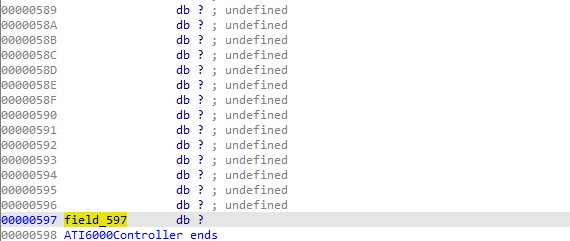
To create fields in the middle of the gap, go to the specific offset in the struct (G can be used for big structs).
Fixed-size structure 3: fill with dummy fields
- create the struct (go to Structures view, press Ins and specify a name);
- create one dummy field (e.g. a dword);
- press * and enter the size (divided by the field size if different from byte). Uncheck “Create as array” and click OK.
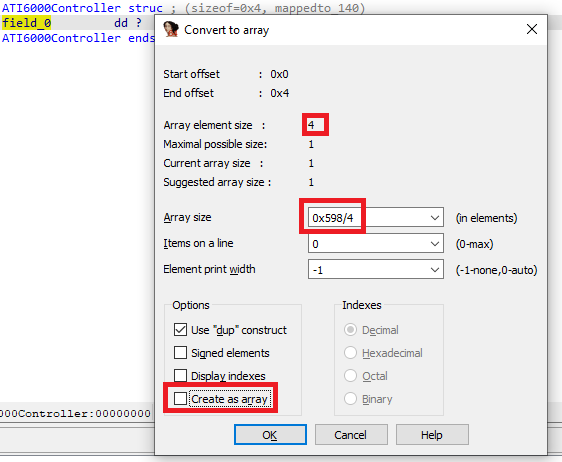
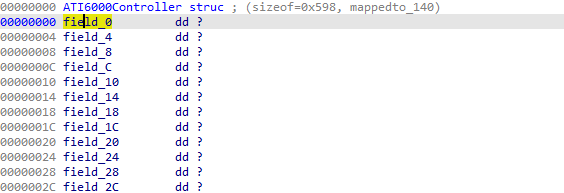
Automatically create fields from code
Using a structure with a gap in the middle (option 2 above) is especially useful when analyzing functions that work with it using a fixed register base. For example, this function uses rbx as the base for the structure:
ATI6000Controller::initializeProjectDependentResources(void) proc near push rbp mov rbp, rsp push rbx sub rsp, 8 mov rbx, rdi lea rax, `vtable for'NI40SharedController mov rdi, rbx ; this call qword ptr [rax+0C30h] test eax, eax jnz loc_25CD mov rax, [rbx+168h] mov [rbx+4B8h], rax mov rax, [rbx+178h] mov [rbx+4C0h], rax mov rax, [rbx+150h] mov [rbx+4C8h], rax mov [rbx+4B0h], rbx mov rax, [rbx+448h] mov [rbx+4D0h], rax mov rcx, [rbx+170h] mov [rbx+4D8h], rcx mov rcx, [rax] mov [rbx+4E0h], rcx mov eax, [rax+8] mov [rbx+4E8h], rax call NI40PowerPlayManager::createPowerPlayManager(void) mov [rbx+450h], rax test rax, rax jnz short loc_2585 mov eax, 0E00002BDh jmp short loc_25CD ---------------------------------------------------------------loc_2585:
mov rcx, [rax]
lea rsi, [rbx+4B0h]
…
To automatically create fields for all rbx-based accesses:
- select all instructions using
rbx; - from context menu, choose “Structure offset” (or press T);
- in the dialog, make sure Register is set to
rbx, select the created struct (a red cross simply means that it has no fields at the matching offsets currently); - from the right pane’s context menu, choose “Add missing fields”.
You can then repeat this for all other functions working with the structure to create other missing fields.
Article Link: https://www.hex-rays.com/blog/igor-tip-of-the-week-12-creating-structures-with-known-size/
